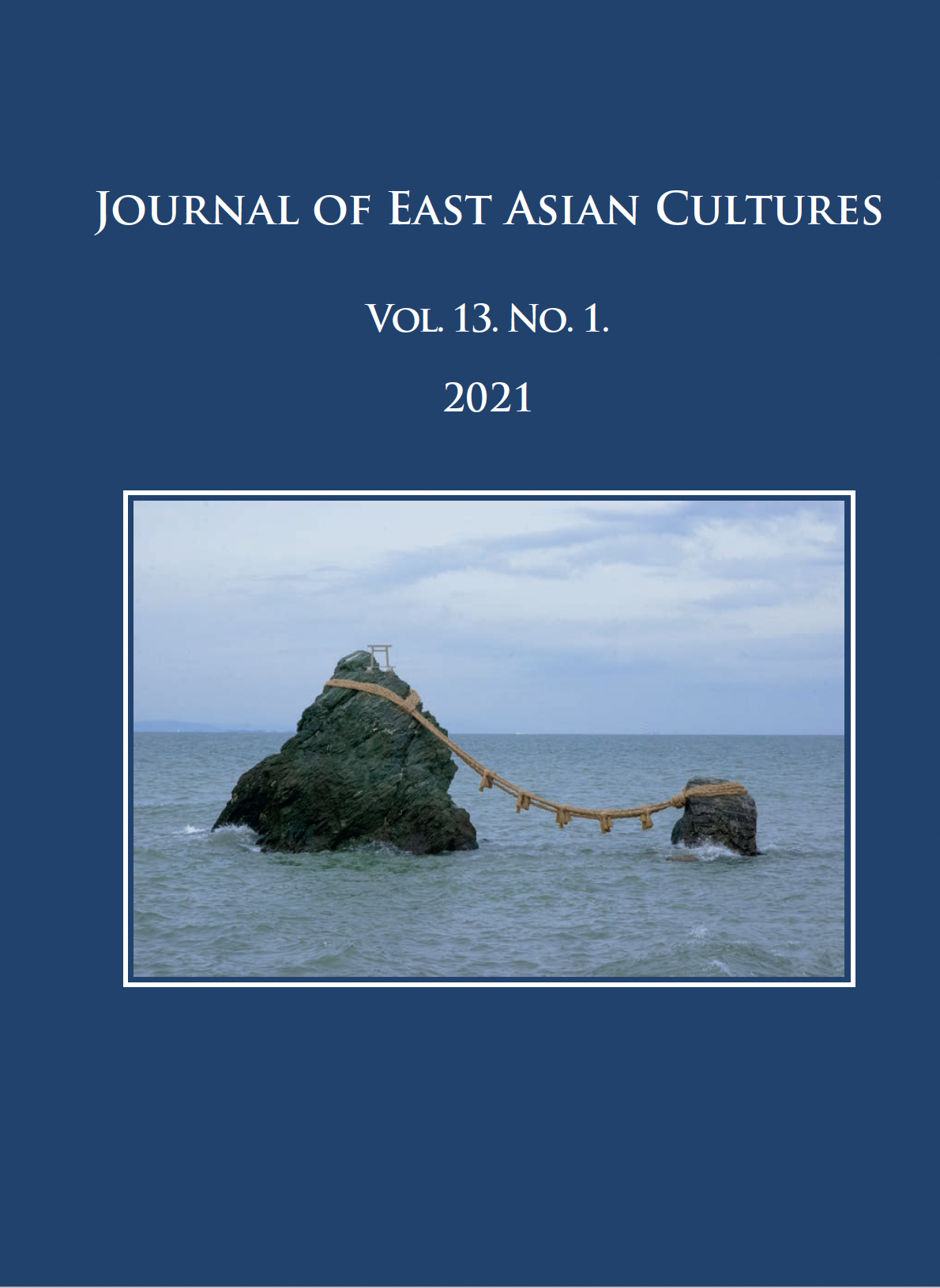The Role of Family in the Construction of Traditions among Second-Generation Chinese Immigrants in Hungary
Megjelent 2021-12-15
Kulcsszavak
- második generációs kínai bevándorlók,
- multikulturális identitás,
- család,
- hagyomány
Hogyan kell idézni
Copyright (c) 2021 a szerző(k)

This work is licensed under a Creative Commons Attribution-NonCommercial 4.0 International License.
Absztrakt
A magyarországi kínai bevándorlók körében végzett kutatások alapján körvonalazható, hogy a második generációs magyarországi kínai származású fiatalok komplex, multikulturális identitástudattal rendelkeznek, és kulturális identitáskonstrukciójuk során a fogadó és a küldő ország kulturális környezetéből, a bevándorló diszpórájából és a bevándorló családjából is kölcsönöznek elemeket. Ez a tanulmány 20 második generációs kínai bevándorlóval készített interjú eredményeit mutatja be, különös hangsúlyt fektetve a résztvevők komplex kulturális identitástudatának vizsgálatára és a család szerepének megértésére a tradícióalkotásban. A feltárt eredmények arra utalnak, hogy a bevándorló családjában a generációk között alkudozási folyamatok zajlanak a tradíciókról és szokásokról, melyek különösen intenzívvé válnak azokon a területeken, ahol a szülői kontroll erősebb. Ezek a területek: az oktatás, apárválasztás/házasság és a nyelv. A családban megtartott ünnepek és ünnepi szokások – a generációk együttes munkájának köszönhetően – kreatív megoldásokat alkalmazó alkotófolyamatok során jönnek létre, és vegyesen tartalmaznak elemeket a küldő és a fogadó ország kultúrájából is.
Hivatkozások
- Asher, Curt 2011. “The progressive past: How History Can Help Us Serve Generation 1.5.” Reference & User Services Quarterly 51.1: 43–48. https://doi.org/10.5860/rusq.51n1.43
- Borsfay Krisztina – Nguyen Luu Lan Anh 2018. “Megküzdés a migránslét kihívásaival. Magyarországi kínai gyerekek akkulturációs tapasztalatainak feltérképezése” [Coping with the challenges of being a migrant. Exploring acculturation experiences of Chinese children living in Hungary]. Alkalmazott Pszichológia 2018.4: 7–33.
- Esser, Hartmut 2006. “Migration, Language and Integration.” AKI Research Review 4.
- European Commission n. d. “Migration and Home Affaires.” 13.04.2020. URL: https://ec.europa.eu/home-affairs/what-we-do/networks/european_migration_network/glossary_search/second-generation-migrant_en
- Foner, Nancy 1997. “The Immigrant Family: Cultural Legacies and Cultural Changes.” The International Migration Review 31.4: 961–974. https://doi.org/10.1177/019791839703100407
- Foner, Nancy – Dreby, Joanna 2011. “Relations Between the Generations in Immigrant Families.” Annual Review of Sociology 2011.37: 545–567. https://doi.org/10.1146/annurev-soc-081309-150030
- Fukuyama, Francis 1996. Trust: The Social Virtues and the Creation of Prosperity. New York: Free Press.
- Gelmana, Susan A. – Roberts, Steven O. 2017. “How language shapes the cultural inheritance of categories.” PNAS 114.30: 7900–7907. https://doi.org/10.1073/pnas.1621073114
- Graburn, Nelson H. H. 2001. “What is Tradition?” Museum Anthropology 24.2/3: 6–11. https://doi.org/10.1525/mua.2000.24.2-3.6
- Guo Xiaojing 2010. “Beilleszkedtek-e a Magyarországi Kínaiak?” Távol-keleti Tanulmányok 2010.1: 123¬–133.
- Huang, Grace Hui-Chen – Gove, Mary 2012. “Confucianism and Chinese Families: Values and Practices in Education.” International Journal of Humanities and Social Science 2.3: 10–14.
- Kibria, Nazli 1993. Family Tightrope: The Changing Lives of Vietnamese Americans. Princeton University Press.
- Lieber, Eli et al. 2004. “Filial Piety, Modernization, and the Challenges of Raising Children for Chinese Immigrants: Quantitative and Qualitative Evidence.” Ethos 32.3: 324–347. https://doi.org/10.1525/eth.2004.32.3.324
- Nesteruk, Olena 2010. “Heritage language maintenance and loss among the children of Eastern European immigrants in the USA.” Journal of Multilingual and Multicultural Development 31.3: 271–286. https://doi.org/10.1080/01434630903582722
- Nyíri Pál 2003. “Új kisebbség Magyarországon: a kínaiak” [New minority in Hungary: the Chinese]. Barátság 10.2: 3865–¬3871.
- Oring, Elliot 2013. “Thinking through Tradition.” In: Blank, Trevor J. – Howard, Robert G. (eds.) Tradition in the 21st century: Locating the role of the past in the present. Boulder, Colorado: University Press of Colorado, 22¬–48. https://doi.org/10.7330/9780874218992.c01
- Putnam, Robert 1993. “The Prosperous Community: Social Capital and Public Life.” The American Prospect 1993.13: 35–42.
- Sebestyén Nóra – Fülöp Márta 2014. “A versengés, győzelem és vesztés szubjektív jelentése magyar, kínai és Magyarországon tanuló kínai diákok körében” [Subjective meanings of competition, winning and losing among Hungarian, Chinese and Chinese immigrant students living in Hungary]. Magyar Pszichológiai Szemle 70.1/9: 143–158. https://doi.org/10.1556/0016.2015.70.1.9
- Suárez-Orozco, Carola – Suárez-Orozco, Marcelo M. 2015. “Structuring Opportunity for Immigration Origin Children.” In: Antonio M. Battro – Ingo Potrykus – Marcelo Sánchez Sorondo (eds.) Bread and Brain, Education and Poverty. Proceedings of the Working Group, 4-6 November 2013. [Scripta Varia 125.] Vatican City: Libreria Editrice Vaticana, 127–164.
- Várhalmi, Zoltán 2010a. “A budapesti kínai és vietnámi gazdasági klaszterek néhány jellegzetessége” [Some Characteristics of Chinese and Vietnamese Economic Clusters]. In: Hárs Ágnes – Tóth Judit (eds.) Változó migráció – változó környezet [Changing Migration – Changing Context]. Budapest: MTA Etnikai-nemzeti Kisebbségkutató Intézete, 173–189.
- Várhalmi, Zoltán 2010b (2011). “Magyarországi migánsok kapcsolathálójának típusai, jellegzetességei” [Types and characteristics of the migrant networks in Hungary]. In: Örkény Antal – Székelyi Mária (eds.) Az idegen Magyarország. Bevándorlók társadalmi integrációja [The Foreign Hungary. The Social Integration of Immigrants]. Budapest: MTA Etnikai-nemzeti Kisebbségkutató Intézete – ELTE Eötvös Kiadó, 169–187.
- Yang Hu – Scott, Jacqueline 2014. “Family and gender values in China: Generational, Geographic, and Gender Differences.” Journal of Family Issues 39.9: 1–27.

